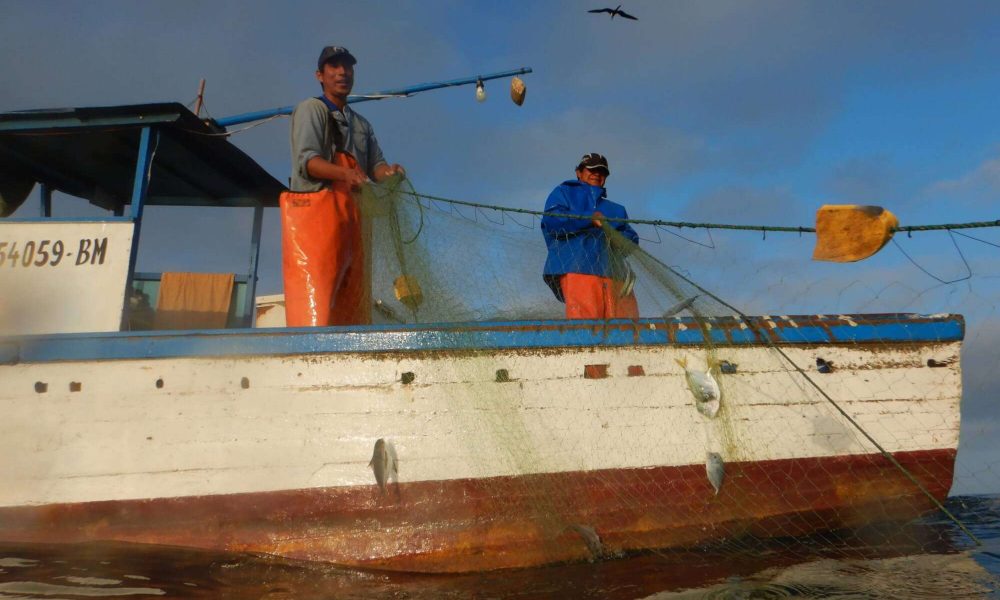
At SafetyNet Technologies we are committed to putting fishing crews at the centre of our design process for all our products. In fact, we involve working fishers in every stage of our product development to ensure our products fit seamlessly into fishing operations and work as they should.
In 2020, we teamed up with Manta Trust to understand and try to tackle the issue of bycatch in Peruvian artisanal fisheries. Artisanal fisheries are very different to the commercial fisheries we usually work with. Often, fishing crews are subsistence fishing and make considerably less income than the average commercial fishing crew.
We went into this project to find out how we might use light technology to enable sustainable artisanal fishing. We spent four months working directly with the fishing communities in Peru to understand the ins and outs of their fishery, lives and needs.
We work with fishers to come up with Precision Fishing solutions that deliver measurable benefits and enable greater sustainability without compromising their livelihoods. This process is called Human-Centred Design and it underpins everything we do at SafetyNet Technologies.
For this approach to be fully successful, we must first gain the trust of fishers. We do this by building long term partnerships with those working in the fishing industry to fully understand their livelihoods and the challenges they face.
When given the opportunity to work with Manta Trust in Peru, we knew that a human-centred approach would be essential. The artisanal fishing industry is very different to the commercial fishing industry that we are used to working in. Therefore, we needed to start from scratch, building our economic, environmental, and cultural understanding of the fishing communities in Zorritos and Mancora.
Originally, the SNTech team was meant to fly out to Peru and spend a few weeks working alongside local fishermen. Unfortunately, this was cancelled due to the pandemic, but this proved to be a blessing in disguise.

Front Left clockwise: Stefany Rojas, Mariella Scarpati, Wilmer Purizaca Ayala, Alejandra Mendoza, Claudia Ampuero, Eliane Cohen, Lucia Florez, Rosario Escobedo
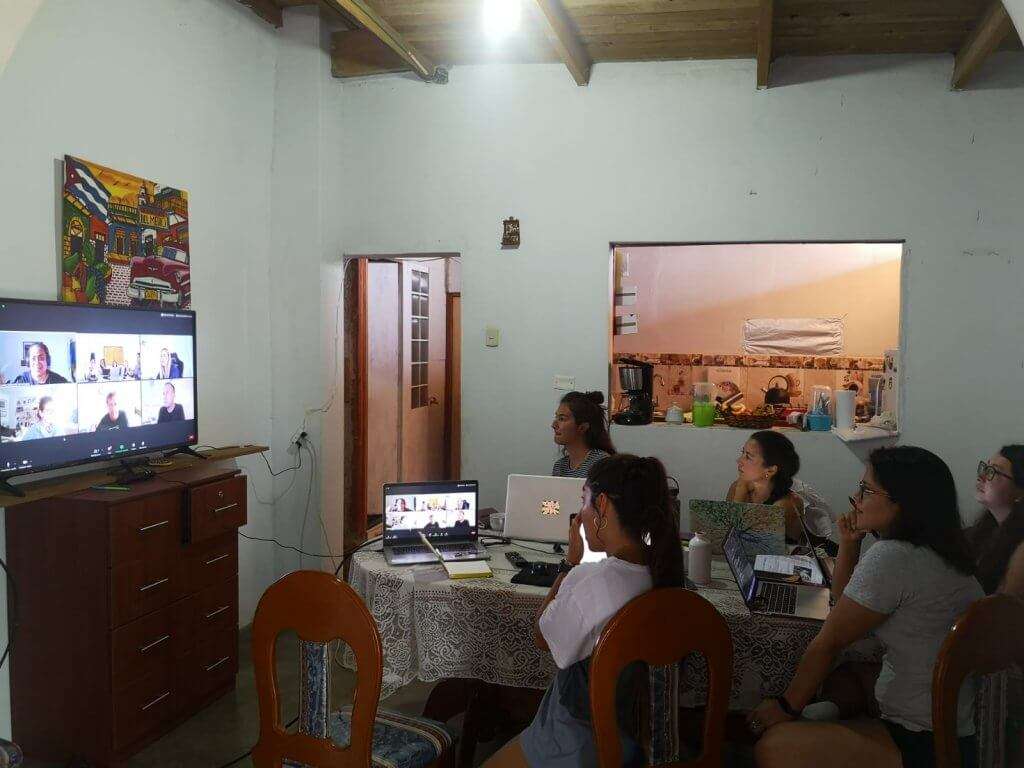
SNTech and the local research team working across timezones through Zoom
Instead, we assembled a team of seven local researchers in Peru to conduct research on our behalf. They spent four months in the Zorritos and Mancora regions working with and interviewing local fishers and stakeholders. Overall, we had sixty people from the fishing community, government and NGOs participate in our project. The team in the UK worked closely with the researchers in Peru, using online tools to their full effect to capture all the insights and information.
Being Peruvians themselves, they were able to provide us with an innate and nuanced insight into the social, economic, and environmental landscape that would have been invisible to outsiders. With their hard work and dedication, we were able to understand the fishing communities’ approach to technology, business and the marine environment.
Through the help of the Peruvian research team and bi-weekly zoom calls, we could fully engage with the people in Zorritos and Mancora. Together, we were able to capture all elements of life in these fishing communities and listened with empathy to their life experiences. It was an opportunity to give the fishing communities a voice and share their experience from an emotional level, rather than through stats and numbers.
Read this article by Steve Lee, who was part of this project, to learn more about the project and the importance of a systemic design approach.
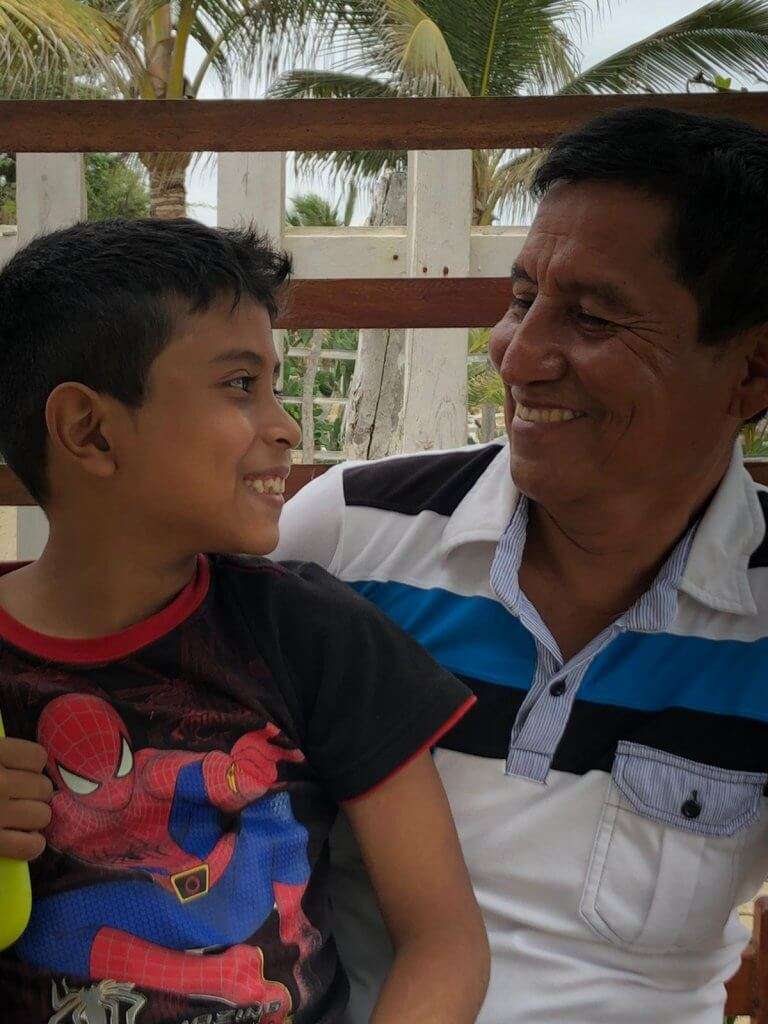
We quickly learnt that the incentives for using Pisces in commercial fishing (bycatch reduction and strict regulations) did not apply to these fishing communities.
Our project with Manta Trust took place in the beautiful Zorritos and Mancora regions of Peru. The waters here are home to a plethora of fish species that are caught and sold by local, artisan fishing communities. Alongside the fish, incredible marine life like manta rays, whale sharks and dolphins also called the region home. Unfortunately, these species often strayed into the nets of local fishermen, becoming bycatch.
One of the first things we learnt was that the notion of “bycatch” was not really seen as a problem. The fishing communities we worked with in Zorritos and Mancora are mostly subsistence fishing. This means they catch just enough fish to meet their basic food and financial needs. However, they are hardly making a profit. As a result, incidental catches are mostly considered a bonus and there is always a buyer for even the most prohibited of species.
Unlike commercial fishing, which is strictly regulated, we quickly found that policing the artisanal fisheries was challenging due to how remote the fishing communities were. As a result, there was little catch monitoring and so the chances of a fisherman being fined for bycatch were low.
The lack of regulation and recognition for bycatch meant that the local fishers in Zorritos and Mancora could not justify the price of Pisces. However, the fishing communities did see the need for reducing incidental catches of certain species. It was obvious to them that the ecosystem was feeling the strain and they spoke with sadness about dwindling catches. The fishers loved their jobs but told us that fishing is just not as profitable as it had once been and now they are just about making ends meet.
Through our interview it was clear that we would need to create an accessible product and service that would work for the fishers and the wider stakeholder community, meeting their social, financial and technological needs.
So, we got to work combining our knowledge of light technology and newfound understanding of the Peruvian artisan fishing industry to understand possible opportunities that would work for everyone.
Our project with Manta Trust was conducted during the pandemic. However, it was important to the team that we had face to face interactions with the community. Covid-19 safe working practices were strictly followed, and we provided full PPE and Health and Safety protocols to keep everyone in Peru safe and happy. A research space was set up on the beach where interviews and workshops could take place whilst maintaining social distancing.

We’ve found that the best way to develop effective fishing technology is to let fishing crews put each prototype to the test. Not only does this testing provide us with invaluable feedback from fishers, we can also directly see how our products fair on a fishing net.
It was apparent our current technology offers were not suitable for the fishing communities in Peru. Therefore, we had to create a product and a way that would be. As a result, the last month of our trip was focussed on gaining a better understanding of what would and wouldn’t work for the fishers. We wanted to figure out their approach to technology and the kind of features that would easily fit in with their fishing practices.
Our research team held workshops with a variety of stakeholders. In these workshops, fishers were given a selection of LED devices to try on their nets. These devices ranged from Pisces to LED fairy lights. We wanted to give them as many different options as possible to get feedback on exactly what features they liked. For example, they liked the brightness of Pisces but preferred the simplicity and price of the fairy lights.
From their feedback, we could begin to design a bycatch reduction product that the fishers in Zorritos and Mancora not only needed but wanted to use.
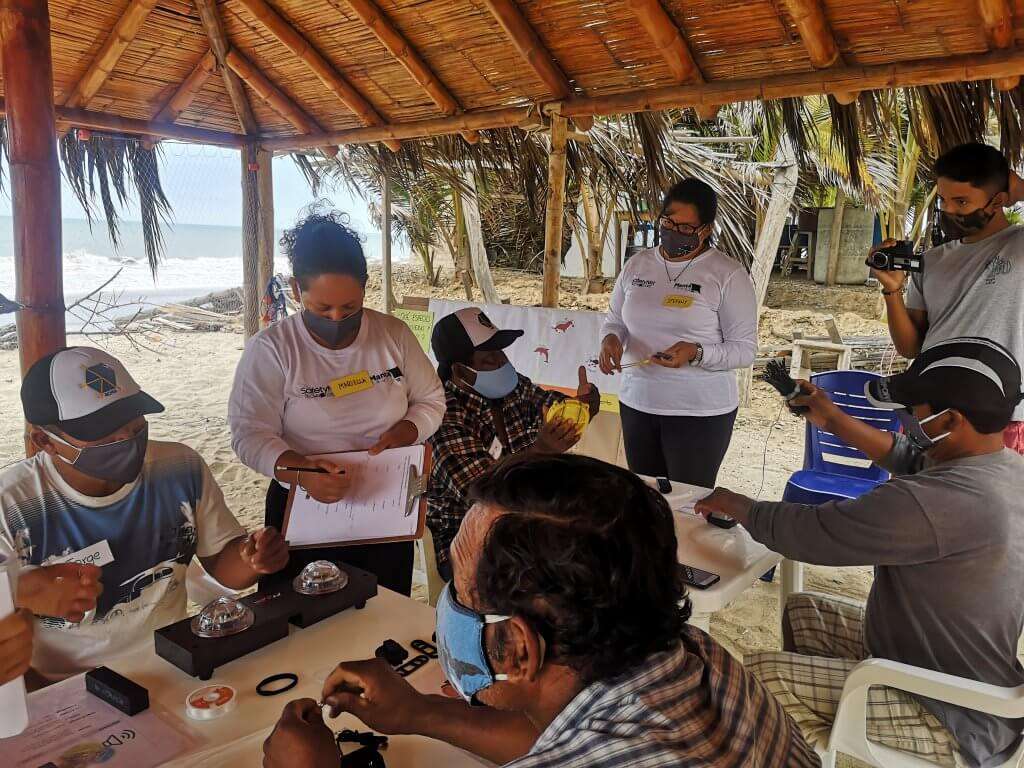
Focus Group workshop with fishers

Multistakeholder Focus Group
As well as fishing crews, we work with different stakeholder groups within the fishing industry. We do this to gain a well rounded understanding of how sustainable fishing would work in every level of the supply chain.
In Peru, we held workshops which included various collaborators from the fishers, to local financiers, restaurants, local government and NGOs. We wanted to understand the needs and concerns of various people within the industry to ensure that whatever product we came up with would benefit the whole industry. It was imperative not to focus on pushing technology onto the industry. Instead we looked at the needs, opportunities and wants of the community as a whole.
After four months of research, we decided to not go ahead with the next stages of development, such as creating prototypes of products. But instead, focus on building trust within the communities we want to work with. However, this project has been highly beneficial and we are continuing to explore how our technology could work for other artisanal fisheries around the world. We continue to collaborate with the Manta Trust to see how we could build upon what we learned.
Researching the artisanal fishery industry, which is so different to commercial fishing we’re used to, made us refine our design approach. For example, we have ramped up the number of trials we are conducting with working fishing crews. In 2021 alone, we have been involved in seven trials, four of which are still ongoing at the time of writing this blog.
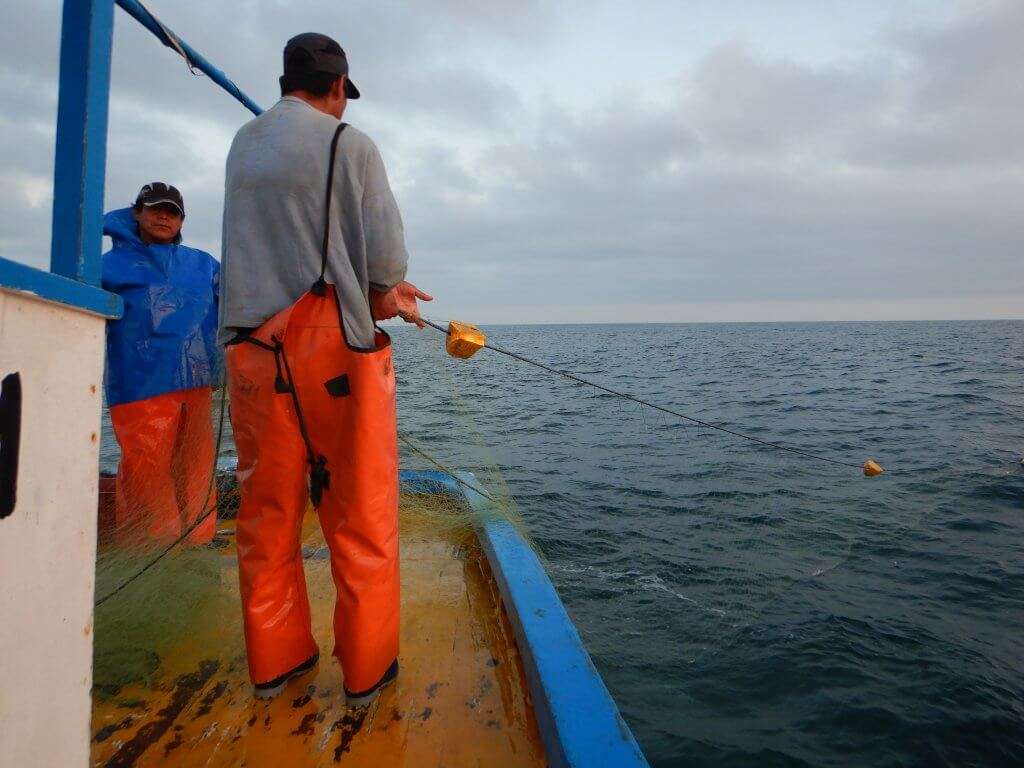
Artisanal fishers hauling their nets
Inspired by this project with the Manta Trust, we at SafetyNet Technologies are motivated to create an impact in developing nations and artisanal fisheries. Globally, artisanal fishing is still the most dominant type of fishing accounting for 70-80% of all fishing activity. Making artisanal fisheries more sustainable has the potential to positively impact thousands of coastal communities.
Since this project ended in 2020, we have put more focus on working with small-scale fisheries in developing countries and currently have two projects on the go. One of which is based in Indonesia. Here, we have partnered with the NGO Yapeka to trial light as a bycatch mitigation solution.
The team would like to pay tribute to our team-mate Rosario “Charo” Escobedo, who sadly passed away in 2021. Her dedication and spirit will be dearly missed.




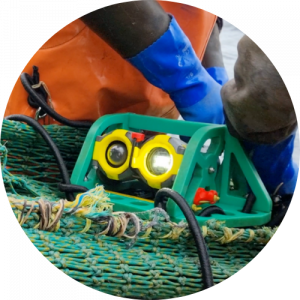
Enter this giveaway for the chance to try an underwater camera on your fishing vessel, with the help of a SafetyNet Technologies expert.